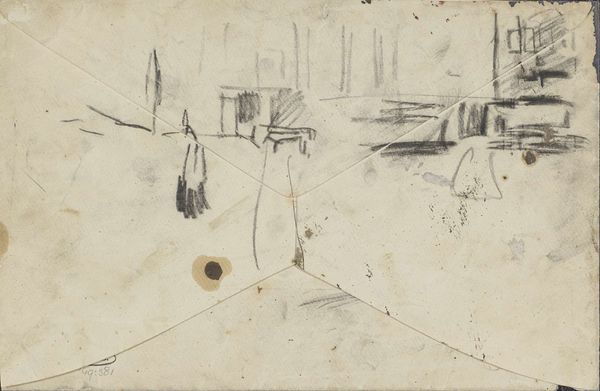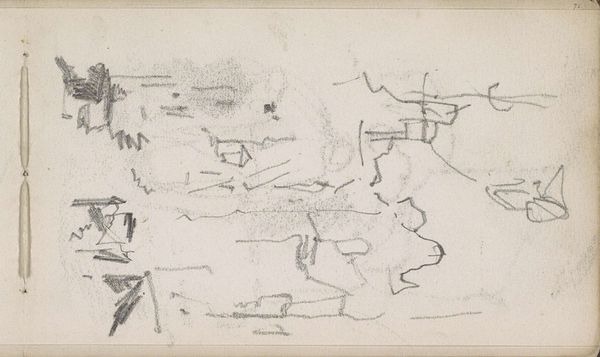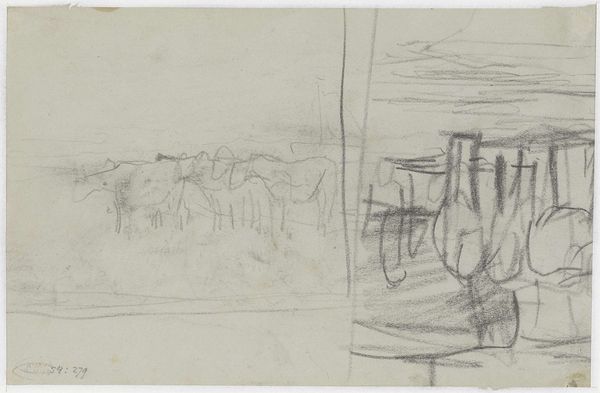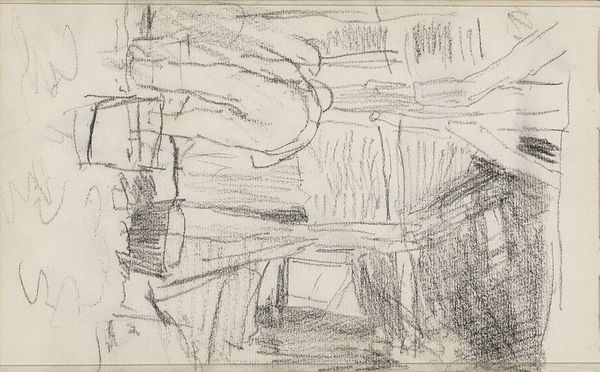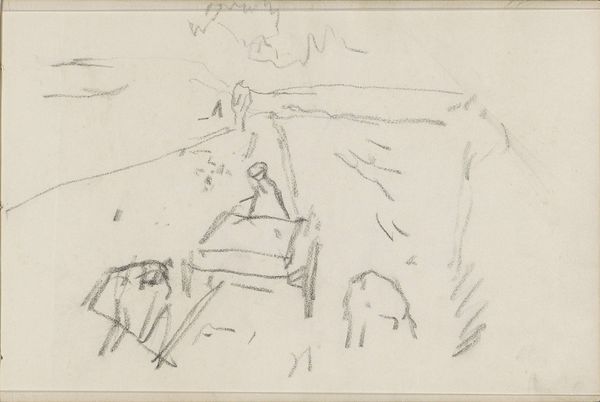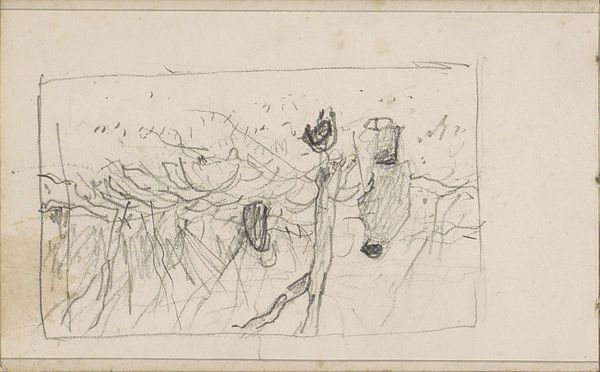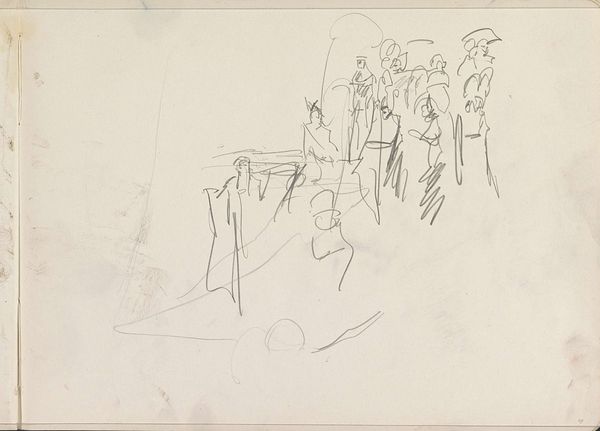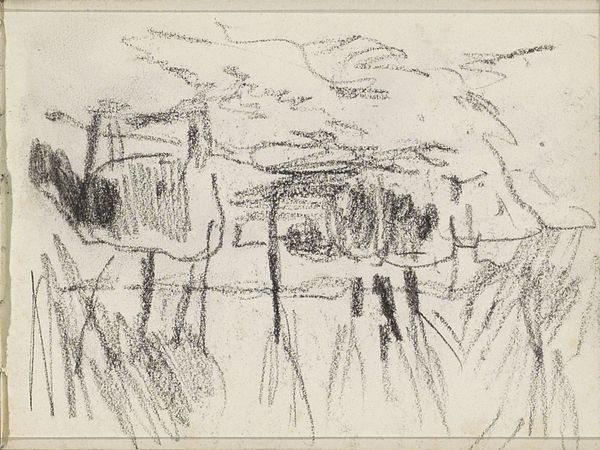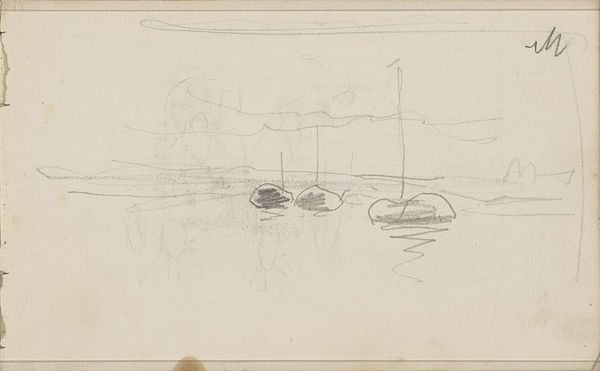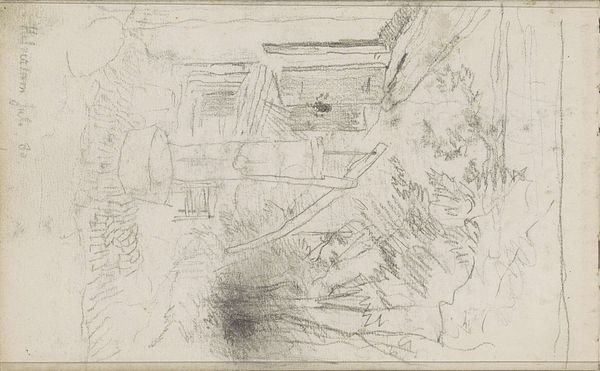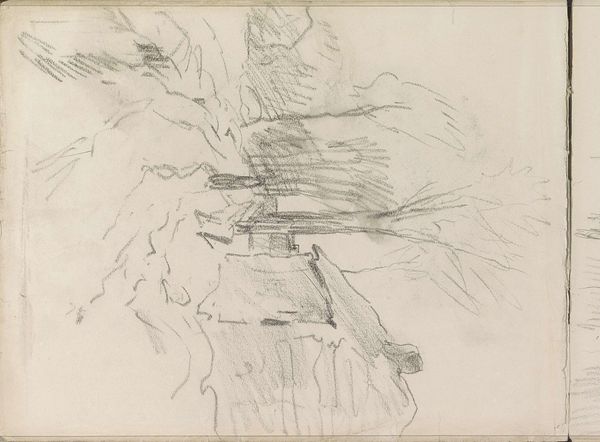
drawing, pencil
#
drawing
#
16_19th-century
#
pencil sketch
#
landscape
#
pencil
#
genre-painting
#
realism
Copyright: Rijks Museum: Open Domain
Editor: This is "Workers Loading Brushwood onto a Cart," a pencil drawing by Anton Mauve, made sometime between 1848 and 1888. The sketchiness gives it a raw, almost urgent feeling. What do you see in this piece? Curator: This drawing, though seemingly simple, provides a glimpse into the socio-economic realities of 19th-century rural life. The laborers, rendered with gestural strokes, are caught in the act of gathering wood – a crucial task for survival, especially for the working class. We need to ask ourselves, who were these workers, and what were their circumstances? Editor: So, it’s less about the beauty of the landscape and more about the people working within it? Curator: Precisely. The landscape isn't just a backdrop; it’s a site of labor and struggle. Consider the Realist movement, which aimed to depict everyday life accurately, often focusing on the lives of the poor and working class. Mauve's drawing participates in this tradition by bringing attention to the labor often unseen and unacknowledged. Do you think the lack of detail is a statement? Editor: That’s a good point. It could suggest the dehumanizing conditions of labor, by showing them faceless, anonymous. Curator: Absolutely. The sketchiness can be interpreted as a commentary on the transient and precarious nature of their existence. It challenges the romanticized view of rural life that was often presented at the time. And we can think about artmaking at this time too – the rise of sketching, which allowed art to capture rapid social change. Editor: I see that shift now. It’s powerful to think about how a simple drawing can unpack such complex social issues. Curator: Indeed. By engaging with the historical and social context, we gain a deeper understanding of the artwork’s significance and its connection to broader societal narratives of labor, class, and identity.
Comments
No comments
Be the first to comment and join the conversation on the ultimate creative platform.


